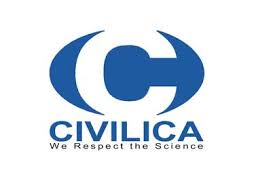About the journal
Recent Articles
-
Open Access Article
1 - Investigating the Erosion Caused By Abrasive Particles in Voronoi Porous Structures Used in the Gas Flow Path
Akram Salehi ، Ali Reza Kiani-Rashid * ، Masoud GolestanipourIssue 2 , Vol. 19 , Summer 2027 -
Open Access Article
2 - Numerical and Experimental Investigation of Bending Strength of Ti6Al4V Titanium Screw in Femur Bone
Ali Fata ، Peyman Mashhadi Keshtiban *Issue 2 , Vol. 19 , Summer 2027 -
Open Access Article
3 - Study of Microstructure, Tensile Properties and Texture of a High Strength Dual Phase Steel Produced by Cold Rolling and Subsequent Intercritical Annealing
Hamid Ashrafi * ، Iman HajianniaIssue 2 , Vol. 19 , Summer 2027 -
Open Access Article
4 - Studying the Effect of the Presence of Different Amounts of Bioactive Glass on the Physical and Mechanical Properties of the Nanocomposite Coating Based on Polycaprolactone-Chitosan-58S Bioactive Glass
Mohammad Hosein Haddadi ، Ebrahim Karamian * ، Hamid Reza Bakhsheshi Rad ، Masoud KasiriAsgaraniIssue 2 , Vol. 19 , Summer 2027 -
Open Access Article
5 - Radiation Damage of High-Energy Ions Produced By Plasma Focus Device on Surface Morphology of Tungsten
mir mohammad reza seyedhabashi * ، Ehsanallah Noori ، alireza aslezaeemIssue 2 , Vol. 19 , Summer 2027 -
Open Access Article
6 - Localized Electrolyte Based on Hexanediol for Use in Aqueous Zn-Ion Batteries
Farzad Soleimani *Issue 2 , Vol. 19 , Summer 2027
Most Viewed Articles
-
Open Access Article
1 - Synthesis of (CZTS) Cu2ZnSnS4 Nanoparticles by Hydrothermal Method for Solar Cell Application
Mahnaz karbassi ، Saeid Baghshahi * ، Nastaran Riahi Noori ، Roozbeh Siavash MoakharIssue 2 , Vol. 15 , Autumn 2021 -
Open Access Article
2 - Optimization of HVOF thermal spraying parameters to improve the oxidation resistance of MCrAlY coating using Response
mostafa tahari *Issue 3 , Vol. 11 , Winter 2017 -
Open Access Article
3 - Fabrication and evaluation of (chitosan / poly-vinyl-pyrrolidone) scaffold properties containing gum tragacanth by freeze-drying method
hamed ghomi * ، Azadeh Sepyani ، Marjan MirhajIssue 1 , Vol. 14 , Summer 2020 -
Open Access Article
4 - Influence of pH of Electroplating on Microstructure and Mechanical Properties of Ni-P-Tio2 Composite Coating Fabricated on AISI 430 Steel
Mina Afzali Grouh ، Morteza Zandrahimi * ، Hadi EbrahimifarIssue 4 , Vol. 14 , Winter 2021 -
Open Access Article
5 - Investigating the oxidation and electrical behavior of AISI 304 steel coated with cobalt for the application of solid oxide fuel cell
Mohammad Reza Ashorzadeh ، Morteza Zandrahimi * ، Hadi EbrahimifarIssue 1 , Vol. 14 , Summer 2020 -
Open Access Article
6 - Production of porous TiC preform by the gel casting process in order to synthesize Ti3SiC2 MAX phase via infiltration of preform
حمزه فراتی راد * ، hamidreza baharvandi ، mohamad maragheIssue 3 , Vol. 11 , Winter 2017 -
Open Access Article
7 - Adsorption and Kinetics Studies of Heavy Metals Removal by MnO2 Modified Zeolite
Mehdi Irannajad * ، Mehrdad Soleimanpour ، Hossein Kamran haghighiIssue 1 , Vol. 13 , Summer 2019 -
Open Access Article
8 - Fabrication and Characterization of Chitosan/ Polycaprolactone Core-Shell Nanofiber Scaffold Containing Platelet-Rich Fibrin by Coaxial Electrospinning Method for Biomedical Applications
AmirAbbas Rastegar ، Mahboobeh Mahmoodi * ، Mohammad Mirjalili ، Navid NasirzadehIssue 2 , Vol. 15 , Autumn 2021 -
Open Access Article
9 - Microstructure and Ablation Resistance of ZrC Coating Prepared by Atmospheric Plasma Spraying (APS) and Solid Shielding/ Shrouded Plasma Spraying (SSPS) Methods on SiC-Coated Graphite
Akbar Eshaghi ، Zia Valefi * ، Naser EhsaniIssue 4 , Vol. 15 , Winter 2021 -
Open Access Article
10 - Effect of Hydroxyapatite Nanoparticles on Differentiotion of Mesenchymal Stem Cells into Bone cells in Polycaprolacton/Keratin/Hydroxyapatite Scaffolds
Mahboobeh Mahmoodi * ، Mina Kalantari ، Marjan MirhajIssue 1 , Vol. 14 , Summer 2020






